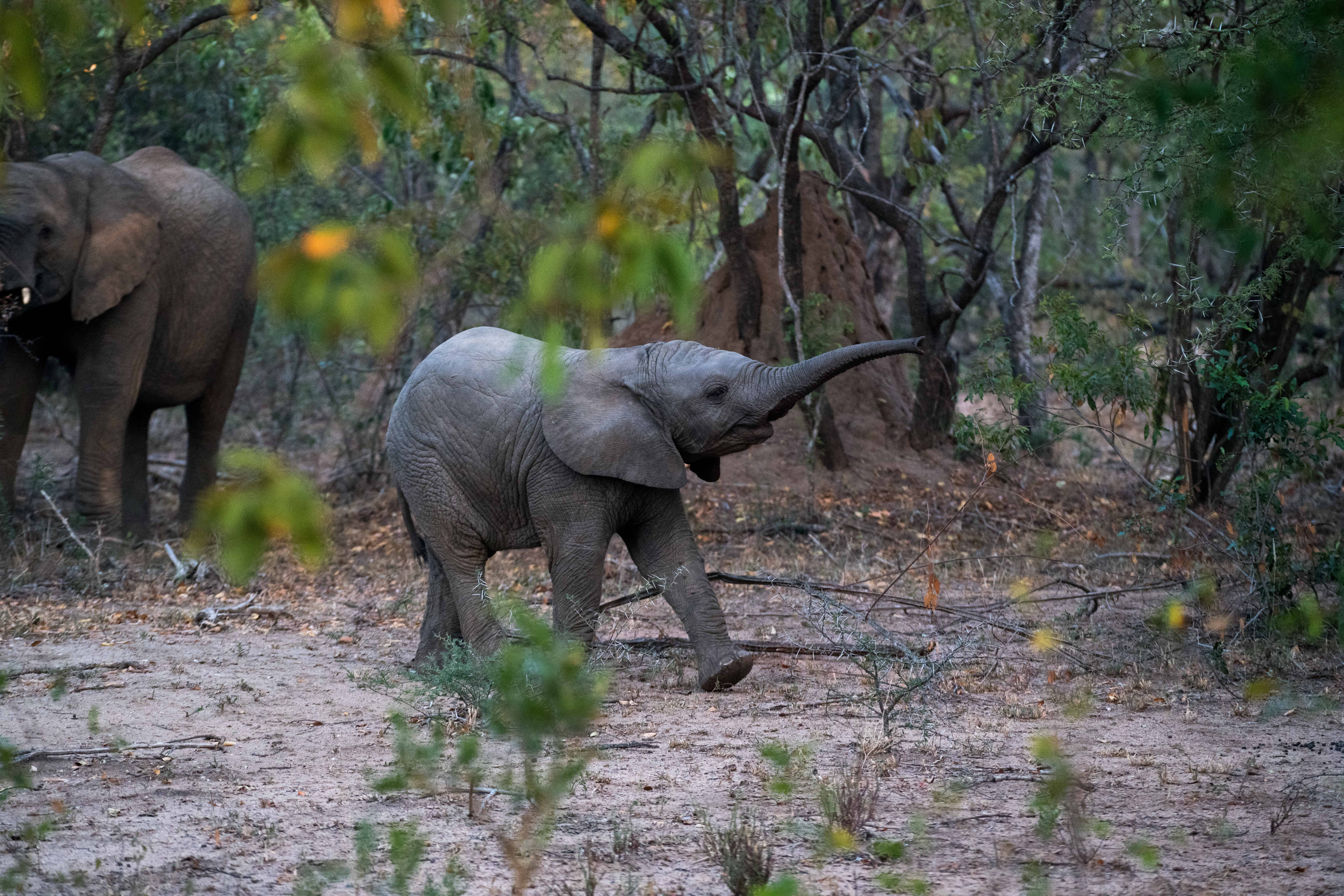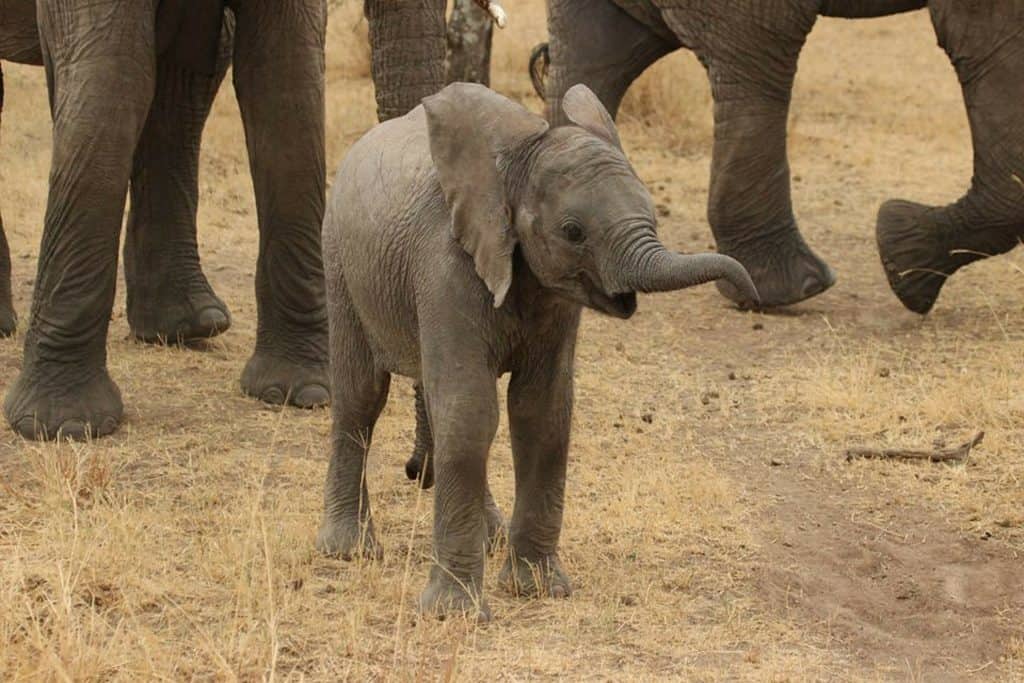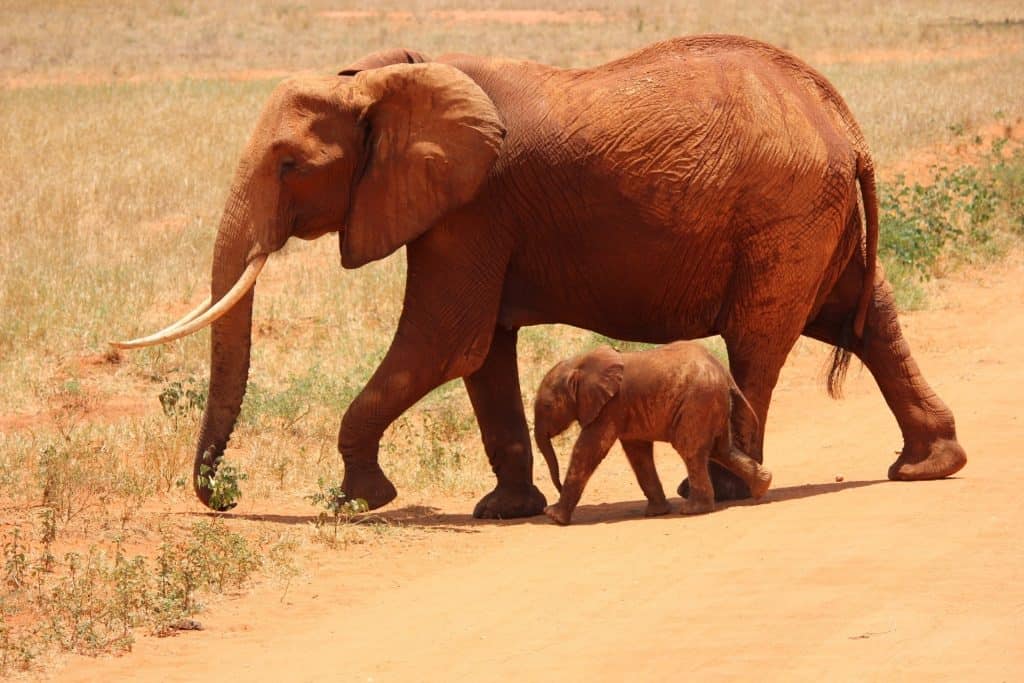
Table of Contents
We’ve all seen heart-wrenching images of orphaned elephant calves, their trunks curled around caretakers in wildlife sanctuaries. These scenes highlight the crucial role of elephants nursing their young and the challenges faced when nature’s plan goes awry. As we delve into the world of elephant rehabilitation, we’re confronted with the stark reality of orphaned elephant calves and the hurdles they must overcome to survive.
In this article, we’ll explore the common reasons why elephant calves become orphans and the immediate care they need. We’ll also look at the long-term challenges of rehabilitating these gentle giants and what it takes to prepare them for life back in the wild. By understanding these issues, we can better appreciate the incredible work being done to give these orphaned calves a second chance at life in their natural habitat.
Common Causes of Elephant Orphans
We’ve identified several key factors that lead to elephant calves becoming orphans in the wild. These causes not only impact individual elephants but also have far-reaching consequences for entire populations and ecosystems.
Poaching
Poaching remains one of the most significant threats to elephant populations worldwide. This illegal practice, driven by the demand for ivory and other elephant products, has devastating effects on elephant families. In the last century alone, poachers have killed a staggering 90% of African elephants 1. The impact of poaching extends beyond the immediate loss of life. When poachers target adult elephants, especially females with large tusks, they leave behind vulnerable orphans who struggle to survive without maternal care.
Recent studies have shown that orphaned juvenile elephants have a lower chance of survival in a herd, which significantly impacts population growth 2. The loss of older, experienced elephants also means a loss of crucial knowledge about migration routes, water sources, and survival strategies that would typically be passed down to younger generations.
Human-Elephant Conflict
As human populations expand and encroach on elephant habitats, conflicts between humans and elephants have become more frequent. These conflicts often arise when elephants, searching for food and water, venture into agricultural areas and destroy crops. In retaliation or to protect their livelihoods, some farmers may harm or kill elephants, leaving young calves orphaned.
The impact of human activity on elephant populations is significant. Research has shown that human-related incidents, such as wounding or killing elephants, decrease survival rates across all age groups in a population 3. Even young calves, which aren’t typically targeted for ivory, face increased mortality rates due to human impact.
Natural Disasters
Climate change has brought about more frequent and severe natural disasters, which pose a growing threat to elephant populations. Droughts, in particular, have become a major concern. In 2019, a severe drought in Zimbabwe resulted in the deaths of over 200 elephants in just two months . These extreme weather events can separate calves from their mothers or lead to the death of adult elephants, leaving their young orphaned and vulnerable.
Floods, often brought on by monsoon seasons, can also cause young elephants to become separated from their herds. In India, for example, the annual monsoon season regularly results in elephant calves being orphaned or stranded 4.
It is clear that addressing these root causes is crucial to preventing more elephant calves from becoming orphans. By tackling poaching, mitigating human-elephant conflict, and developing strategies to help elephants cope with climate change, we can give these magnificent creatures a better chance at survival in their natural habitats.
Immediate Care for Orphaned Calves
When an orphaned elephant calf is rescued, immediate care is crucial to ensure its survival. The first step is to conduct a thorough health assessment to determine the calf’s condition and needs.

Health Assessment
Conservationists begin by examining the calf for any visible injuries, infections, or parasites. We assess its alertness, activity level, and overall behaviour to gage its mental state. Vital signs such as body temperature, pulse rate, and respiratory rate are carefully monitored 5. The calf’s hydration status is evaluated and the condition of its mucous membranes are checked.
In some cases, biological samples like trunk wash, oral swabs, and rectal swabs may be collected for further analysis 6. If necessary, blood samples are taken to assess hematological and serum biochemical parameters, keeping in mind the stress levels of the calf.
Nutrition and Feeding
Proper nutrition is critical for the survival of orphaned elephant calves. In the wild, calves depend on their mother’s milk for at least the first two years of life 7. For rescued calves, we use a specially formulated milk replacer that closely mimics elephant milk.
Initially, the calf is offered electrolytes and rehydration fluids to address any dehydration issues 5. Once the calf is stable, they are introduced to a milk formula. The exact composition of the formula may vary depending on the calf’s age and specific needs, but it typically includes a combination of skim milk powder, coconut milk powder, and added nutrients 6.
Feeding is done every three hours for very young calves, gradually transitioning to a more structured feeding routine as they grow older 4. Bottle-feeding with nipples is used to provide a natural suckling experience, which helps reduce stress levels in the calf 6.
Psychological Support
Orphaned elephant calves often experience deep grief and trauma from the loss of their mothers and families. To address their emotional needs, conservationists provide constant companionship and comfort. Experienced keepers act as surrogate parents, offering unconditional love and support 4.
A calm and nurturing environment is provided for the calf, housing it in a well-lit, well-ventilated enclosure away from human disturbances 6. The calf is given ample space to move around and exercise, which is essential for its physical and mental well-being.
To further support the calf’s psychological needs, they may be introduced to other rescued elephants or even provide a surrogate animal companion, like a sheep, to offer comfort and companionship 8. This social interaction is crucial for the calf’s emotional development and helps prepare it for eventual reintegration into a herd.
By providing immediate and comprehensive care in these three key areas – health assessment, nutrition, and psychological support – orphaned elephant calves are given the best chance at survival and rehabilitation.
Long-Term Rehabilitation Challenges
Rehabilitating orphaned elephant calves presents numerous long-term challenges that require careful consideration and dedicated efforts. These challenges encompass various aspects of elephant nursing and development, including social integration, physical growth, and behavioral training.
Social Integration
One of the most significant hurdles in elephant rehabilitation is the social integration of orphaned calves. Elephants are highly social animals that live in complex family structures, and the loss of a mother can have profound effects on a calf’s social development. Orphaned calves often face difficulties in forming bonds with other elephants and may experience increased aggression from herd members 9.
Research has shown that orphaned elephants receive more aggression from other elephants, including both overt aggression like pushing and more subtle forms like displacements 9. This increased aggression can have long-lasting impacts on the orphans’ social lives and overall well-being. Orphans that leave their families and move into another family unit are likely to receive more aggression than those integrated into their natal groups 9.
To address these challenges, rehabilitation centres must create opportunities for orphaned calves to interact with other elephants in a safe and controlled environment. This allows them to develop social skills and form bonds with their peers, which is crucial for their long-term success in the wild.
Physical Development
Physical development is another critical aspect of elephant rehabilitation that presents unique challenges. Orphaned elephant calves often experience stunted growth compared to non-orphans, which can have significant implications for their long-term survival and reproductive success.
A study published in the journal Conservation Physiology found that orphaning stunts the growth of African elephants by an estimated average of 13 centimeters 10. This reduced growth is likely due to a lack of access to adequate nutrition, as orphan calves don’t have their mothers to keep older, more dominant elephants from pushing them away from optimal plant food sources 10.
To address these physical development challenges, rehabilitation centers must provide orphaned calves with proper nutrition and healthcare. This includes ensuring access to a balanced diet that mimics the nutritional content of elephant milk and implementing regular health check-ups to monitor growth and address any potential issues.
Behavioral Training
Behavioral training is a crucial component of elephant rehabilitation, as it helps prepare orphaned calves for life in the wild. However, this process presents its own set of challenges, particularly in terms of balancing human interaction with the need for the calves to develop natural behaviors.
Traditional elephant handling methods often rely on punishment- and aversion-based techniques, which can be detrimental to the elephants’ well-being 11. To address this challenge, many rehabilitation centers have adopted positive reinforcement training methods, which have shown promising results in eliciting desired behaviors while promoting the elephants’ psychological well-being 11.
Implementing these training methods requires patience, expertise, and a deep understanding of elephant behavior. Rehabilitation centers must invest in training their staff and developing comprehensive behavioral management plans to ensure the best possible outcomes for orphaned calves.
Preparing Orphans for Wild Release
The process of preparing orphaned elephant calves for life in the wild is a complex and delicate journey. Rehabilitation centres have careful guidelines to follow which ensure these young elephants have the best chance of survival and integration into their natural habitat.

Gradual Reintroduction
They often begin the reintroduction process by slowly exposing the orphaned elephants to their new environment. This gradual approach allows them to become familiar with the sights, sounds, and smells of the wild without overwhelming them. The orphans are taken on daily walks, allowing them to explore their surroundings under the watchful eye of their keepers 12. These excursions serve as a form of “bush school,” where the young elephants learn essential skills such as foraging, social interaction, and navigation.
As the orphans grow more confident, the duration and complexity of these outings is increased. They begin to interact with wild elephants, which is crucial for their social development. These encounters help the orphans learn proper elephant behaviour and communication, preparing them for eventual integration into wild herds 12.
Monitoring and Support
Even after the orphans are released, the work is far from over. A multipronged strategy is implemented to monitor their welfare and health without infringing on their freedom 13. This approach includes:
- Full-time keepers: Living in the bush near the release herd, these dedicated teams work in shifts to ensure 24/7 monitoring 13.
- Field researchers: Trained professionals monitor the orphans daily, supporting ongoing research efforts 13.
- GPS tracking collars: These devices allow researchers to track elephant movements in real-time, providing valuable data on their adaptation to the wild 13.
- Camera traps: These non-invasive tools help to observe the elephants’ behaviour without direct human presence 13.
Some rehabilitation centres also employ local community members as “Elephant Guardians,” who provide situational reports when they encounter the release herd 13. This community involvement not only aids in monitoring but also fosters a positive relationship between humans and elephants.
These monitoring efforts focus on several key aspects:
- Health and wellbeing: Tracking the elephants’ body condition, weight, and any potential injuries 13.
- Feeding patterns: Observing their browsing habits helps conservationists ensure they’re adapting well to their new environment 13.
- Social integration: They closely watch how the released elephants interact with wild herds, as this is crucial for their long-term survival 13.
Through these comprehensive efforts, conservationists aim to give orphaned elephant calves the best possible chance at a successful life in the wild. This approach combines careful preparation, gradual reintroduction, and ongoing support to ensure these magnificent animals can thrive in their natural habitat.
Conclusion
The journey of rehabilitating orphaned elephant calves is a complex and challenging endeavour. From addressing the root causes of orphaning to providing immediate care and long-term support, every step plays a crucial role to ensure these gentle giants have a chance at survival. The process has a significant impact on not just individual elephants, but entire populations and ecosystems.
As we look to the future, the importance of continued research and community involvement cannot be overstated. These efforts are essential to refine rehabilitation techniques and foster positive human-elephant relationships. By working together and donating to elephant wildlife rehabilitation centres, we can give orphaned elephant calves the best possible chance to thrive in their natural habitat. In the end, our commitment to these magnificent creatures not only helps individual elephants but also contributes to the preservation of a species that plays a vital role in our world’s ecosystems.
FAQs
What typically happens to orphaned baby elephants?
Orphaned baby elephants are usually adopted by other members of their herd, often the mother’s previous herd, where they receive care and support. If the herd does not adopt them, and they are fortunate, a wildlife rescue organization might intervene and take them to a sanctuary for rehabilitation and care.
How long is the nursing period for baby elephants in the wild?
In the wild, baby elephants typically nurse exclusively for the first six months of their lives.
What are the consequences for a calf if its mother is killed?
When a mother elephant is killed, her calf is left traumatized and vulnerable. The absence of the mother can lead to the calf being caught in traps like wire snares set up by poachers, further increasing their chances of becoming orphaned.
How do elephants care for their calves?
Elephant calves receive extensive care and affection from their mothers and other female members of the herd, such as aunts. These calves are nursed for the first six months, during which they consume nutrient-rich milk that is significantly higher in fat and protein compared to cow’s milk. They typically consume about 10 liters of milk per day during this period.